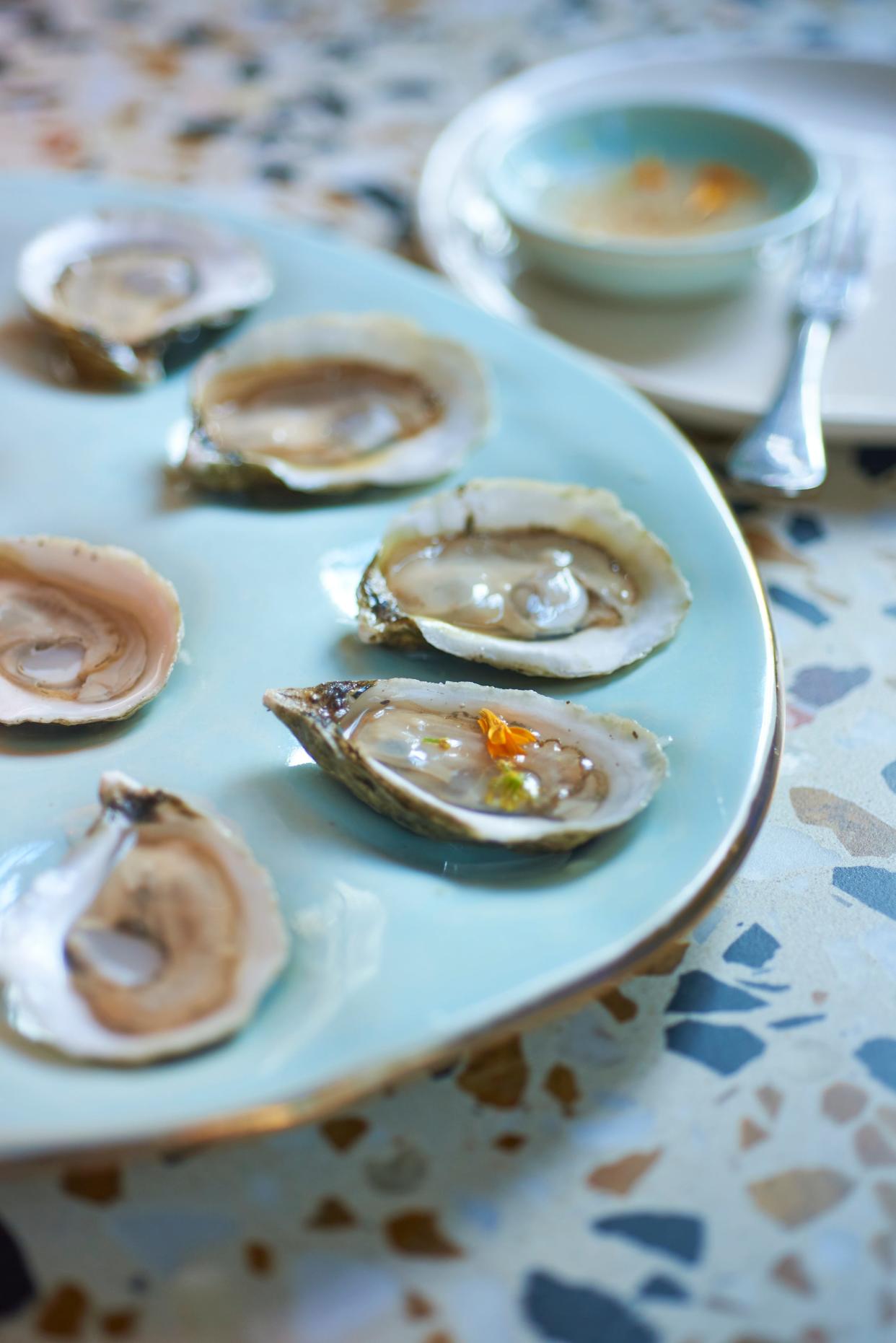Where to find the best oysters in the Wilmington area and how to taste the difference

First of all, let’s be clear, oyster season is all the time in coastal North Carolina. But Oct. 15 did mark the start of wild oyster season, and responsibly farmed oysters can be found year-round.
As you “shellebrate” the bounty that can be found along the N.C. Oyster Trail in the coming weeks and months, you may see the names of places not easily found on maps. To help with that, here’s a look at where some of the area’s best oysters are found, as well as some expert advice on what to expect.
Merroir: When talking (and tasting) oysters, it helps to know the language. Merroir is the term, like terroir, that denotes how the qualities of the water influence an oyster's taste. When chef Dean Neff of Seabird restaurant in downtown Wilmington is thinking about the flavor profile of an oyster, he often uses words like salinity and brininess, which can be determined by the closeness to the ocean and influx of tides. Oysters can also be buttery or crisp, sweet or with a distinctive minerality.
"And sometimes, there are even grassy or melon notes," he said, because of the oysters' diet of algae and phytonutrients.
But, if you have trouble discerning some of these nuances, don't worry. Even chefs who have been enjoying local oysters their whole lives have trouble distinguishing between oysters, said the Wilmington-native Carson Jewell, chef at manna in downtown Wilmington.
"The thing that sets our oysters apart from other regions that grow them is the salinity," he said. "Other areas cultivate them in places further away from the coast... but here, our oysters are just packed with flavor."
Stump Sound: The most well-known oyster growing area in the state is this seven-mile marshy area that stretches from the Topsail area to Sneads Ferry, which is also dotted with landmarks like Permuda Island reserve. It's close enough to the ocean to create a salty oyster, but the many inlets and creeks add in fresh water and buffer the area from strong currents.
"They are buttery and clean," Neff said. "Salty, but balanced."
Masonboro Sound: This area behind Masonboro Island south of Wrightsville Beach is where Middle Sound Mariculture grows some of their oysters. Owner James Hargrove said they have a high salinity, and are meaty with an earthy, herbaceous flavor.
When excessive rainfall closes oyster-growing areas until water quality improves, this area is one of the last to close, Jewell said. He believes that creates oysters with a cleaner taste, and less prone to some of the muddy, earthy flavors of others.
Topsail Sound: This body of water near Topsail Island is marshy and high in salinity, with less freshwater input. N. Sea Oyster Co. said there's an open ocean influence and water that's nutrient rich with blue-green algae. The result is a sweet oyster with a salty kick.
"I think these tend to be crisp with a bright salinity," Neff said.
Stones Bay: On the northern end of Southeastern North Carolina, this bay is located in the New River near Sneads Ferry. Matt Schwab of Hold Fast Oyster Company farms in this area, including the Seabirdies he grows especially for Seabird restaurant. He said there's a strong ocean influence, which tumbles the oysters. They are salty and clean.
STAY CONNECTED: Keep up with the area’s latest food news by signing up for the Port City Foodies newsletter and following us on Facebook and Instagram.
Allison Ballard is the food and dining reporter at the StarNews. You can reach her ataballard@gannett.com.
This article originally appeared on Wilmington StarNews: Best oysters in Wilmington and where to get them

